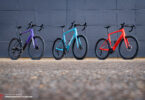How much value should we place on comfort? Isn’t that something we’ll relish more in our old age? And what happened to the old adage of ‘no pain, no gain’? For years cycling has propagated the notion that we’ve got to suffer to perform, that stiff frames are the only way to speed, often at the expense of comfort. But there’s a new era dawning, pioneered by the Trek Domane SLR and its painstakingly developed, all-new, compliance-enhancing features.
We had the opportunity to put the Race Shop Limited Edition Domane SLR through its paces as we took to the Domane for the legendary cobbles of the Ronde Van Vlaanderen Cyclo.

But after hours in the saddle, it wasn’t just our physical state that had been virtually stunned into submission, almost everything we’d thought was part-and-parcel of the cobbles was proven wrong: here was a bike that was excelling in uniting a handful of contradictory characteristics, and potentially pioneering a new generation for road bikes.
In terms of its look, the Trek Domane SLR is pretty standard, eschewing any typically aero or performance design cues. However, peel back the layers and technically speaking it’s one of the most advanced bikes out there, and, dare we say it, almost radically different from its peers in the peloton.
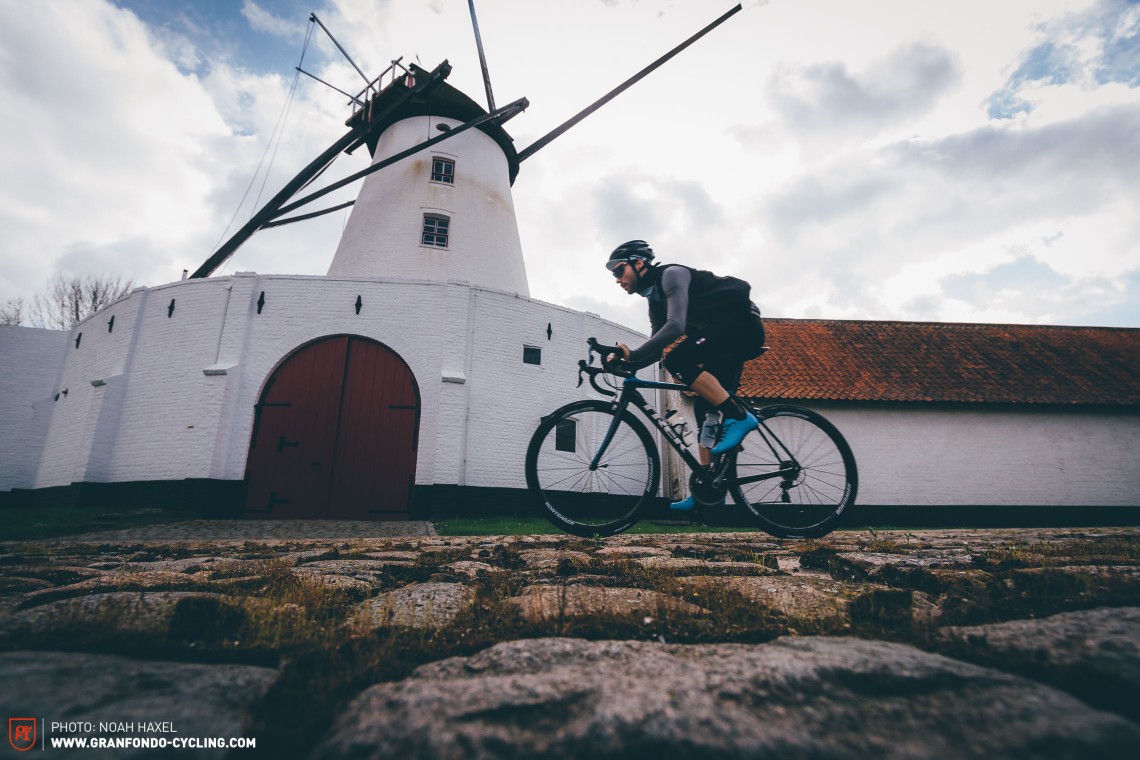

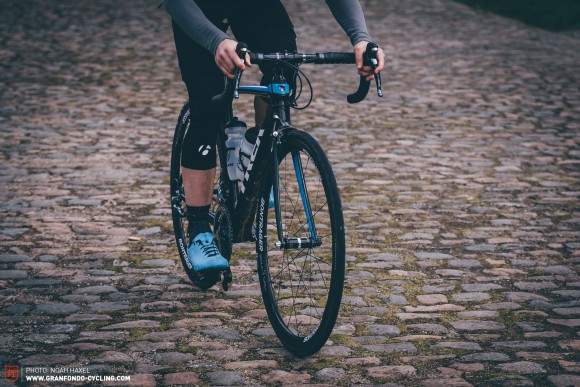
Back in 2012, Trek launched the first generation Domane with the IsoSpeed decoupler, which as the name suggests decouples the seat tube from the toptube. The latest incarnation of the Domane, the SLR, takes this even further with a new iteration of the IsoSpeed at the rear, allowing the rider to adjust the vertical compliance (and subsequent comfort) via a slider spacer between the seat tube and the seat mast. The principle behind this is obvious: the amount of compliance desired varies based on rider preference and terrain. Then there are the physical attributes of the rider, such as weight and height, all affecting how the IsoSpeed decoupler is going to perform. The newest generation is the answer to these disparities, bringing a welcome dose of fine-tuning to the bike.
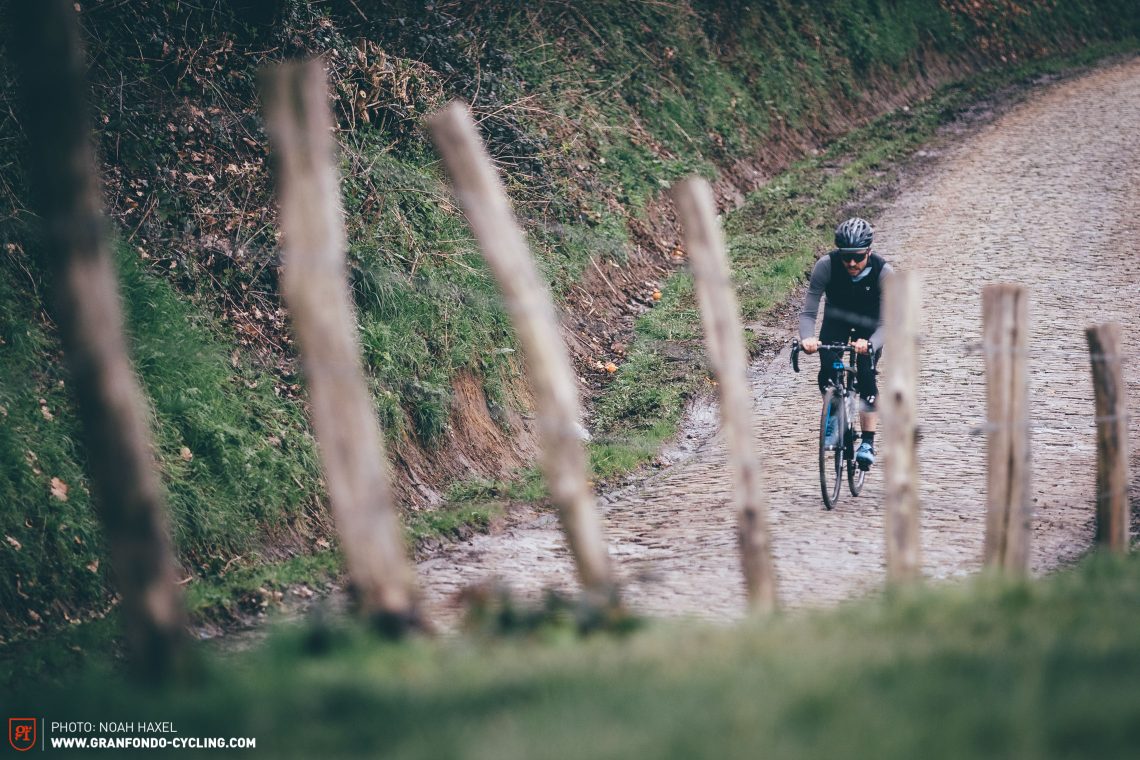
But smart technology doesn’t make a job complete, so Trek built on the feedback of recent years to employ similar IsoSpeed technology at the front to allow for additional vertical flex in the fork steerer tube. Not only did Trek face head-on complaints of the front end being stiffer than the rear on the new Domane’s predecessor, but the new design also eliminates any theory that additional front flex leads to sloppiness and imprecision. Then there’s a new more compliant fork and an additional layup within the all-new Bontrager IsoCore bars designed to add yet more compliance, reduce road vibrations and generate a more balanced ride.
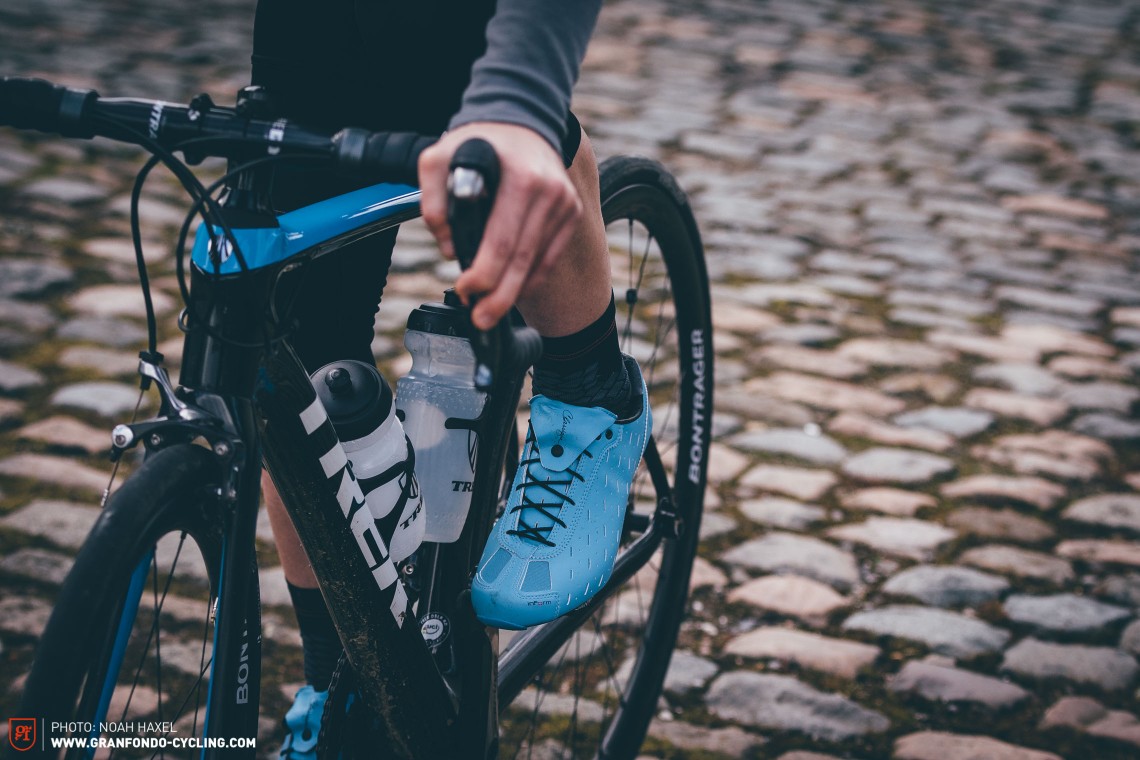
After absorbing marketing hype like ‘smoother is faster’, we were keen to get out on the RVV route to put the bold claims to the test, knowing that only the terrain could prove or disprove Trek’s case. Other than the expected fatigue of riding the route, the ride was eclipsed by smoothness and comfort created by the IsoSpeed technology and aided by the Domane’s pro endurance geometry, which provided great stability. Over the years, the cobbles haven’t changed much, bar the odd rainwater channel that’s dug its way in, but this year’s experience was markedly different: the frame soaked up the bulk of the vibrations and feedback didn’t hammer up from the bars to the peril of the rider. The IsoCore bars not only dampen the vibrations but also retain razor-sharp handling. On any other bike, riding gloveless wouldn’t be the most pleasant sensation – but not with the Domane. It rides predictably, comfortably and with precision. One thing we noted during our test was the presence of loose brake and gear cables, which could be integrated better.
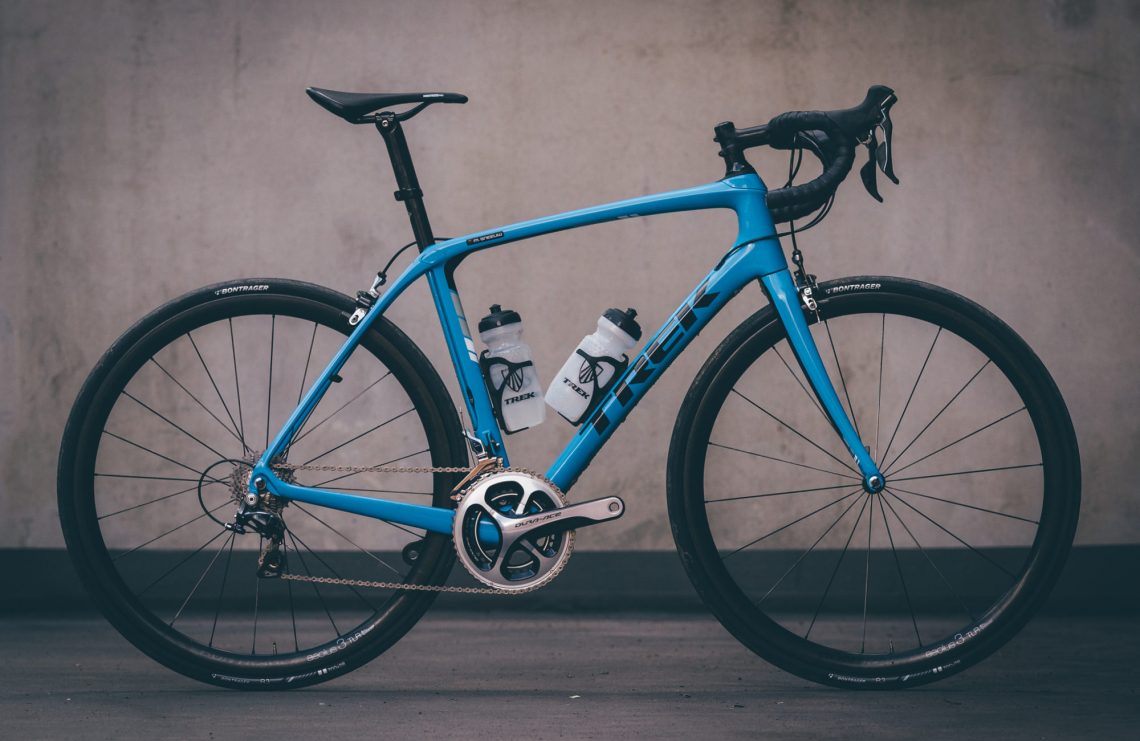

But don’t let our claims for stability and comfort fool you into thinking this is purely a bike for riding cobbles. Despite the added compliance, the bike is still sufficiently stiff to generate decent speed on and off the saddle. We rode the Domane with so-called Pro Endurance Geometry, the same setup that Cancellara rides in races. After all, compared to the Endurance Geometry, the front end is 5.7 cm lower and the reach 2.2 cm longer (we rode a 54cm frame).
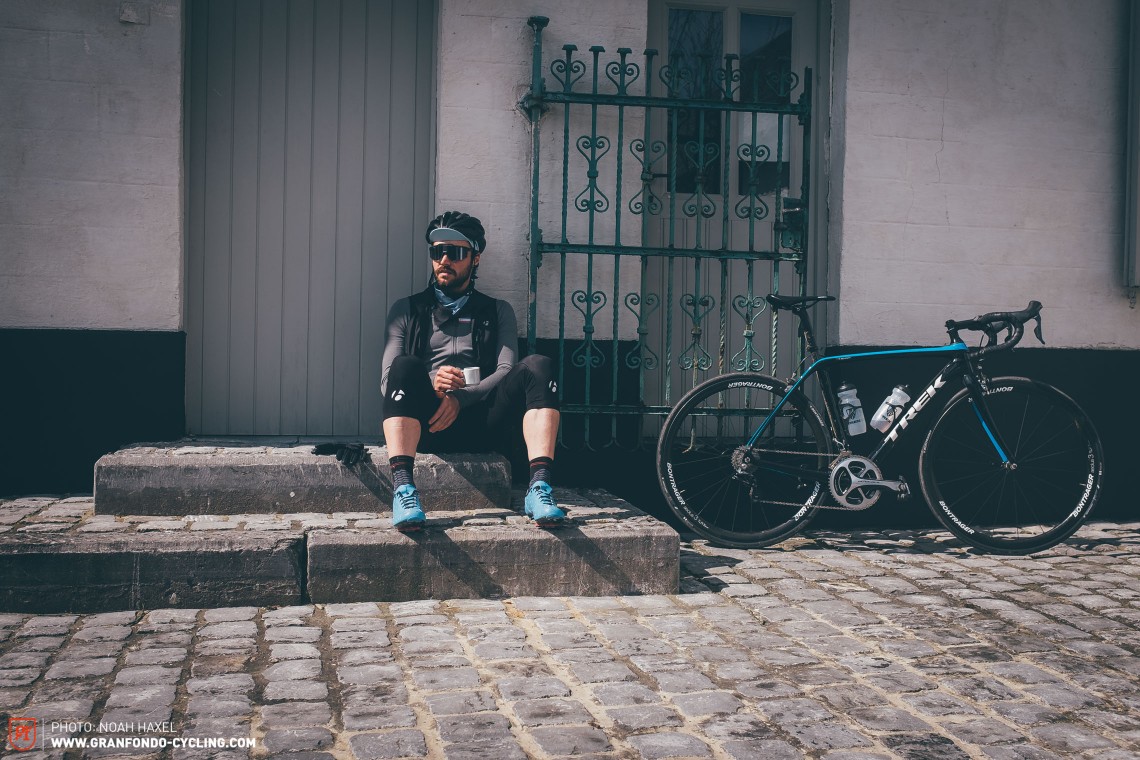
Over the course of the test we played around with the slider to see how much effect it has on the flex. The increments did have a noticeable impact, particularly between the lowest and the central position. According to Trek, the range of adjustment for the rear IsoSpeed decoupler is 31%. So there’s variability in the bike, versatility with the seat tube compliance, smart simplicity, comfort and efficiency. What else? It comes in five options: two with disc brakes and three with regular rim brakes. For those looking for a more unique bike, dive into Trek’s Project One programme and customize the bike on everything from the paintjob to the components.
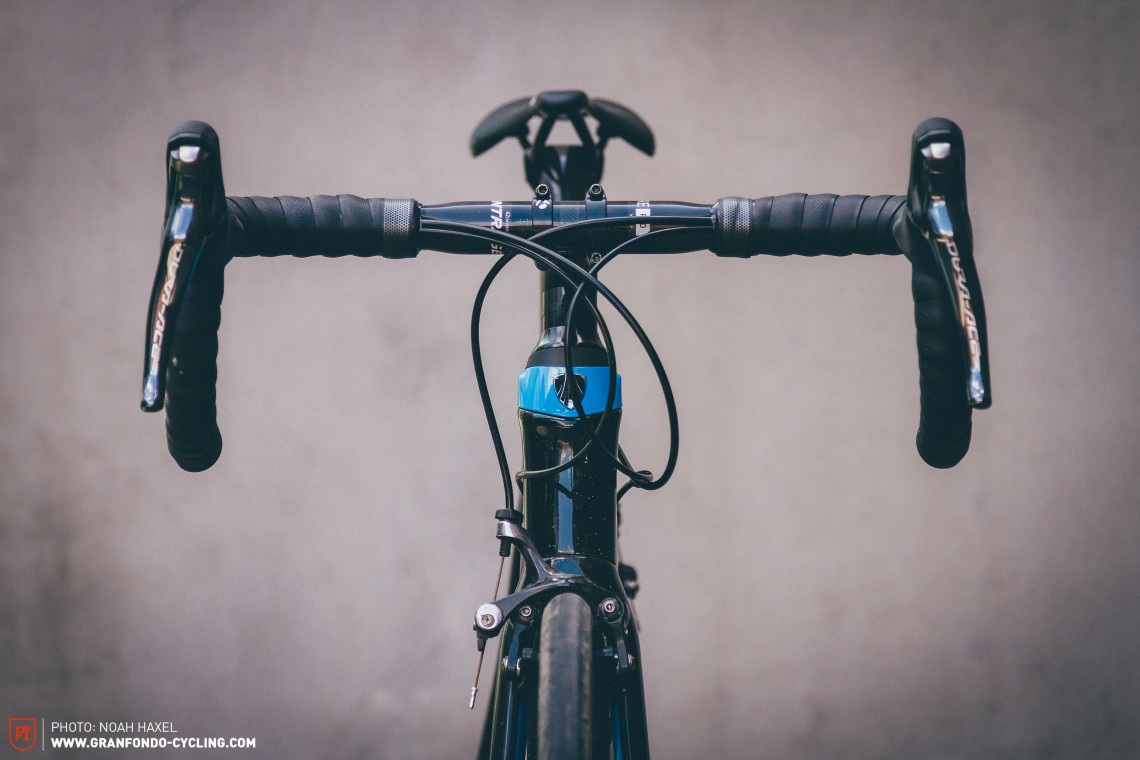

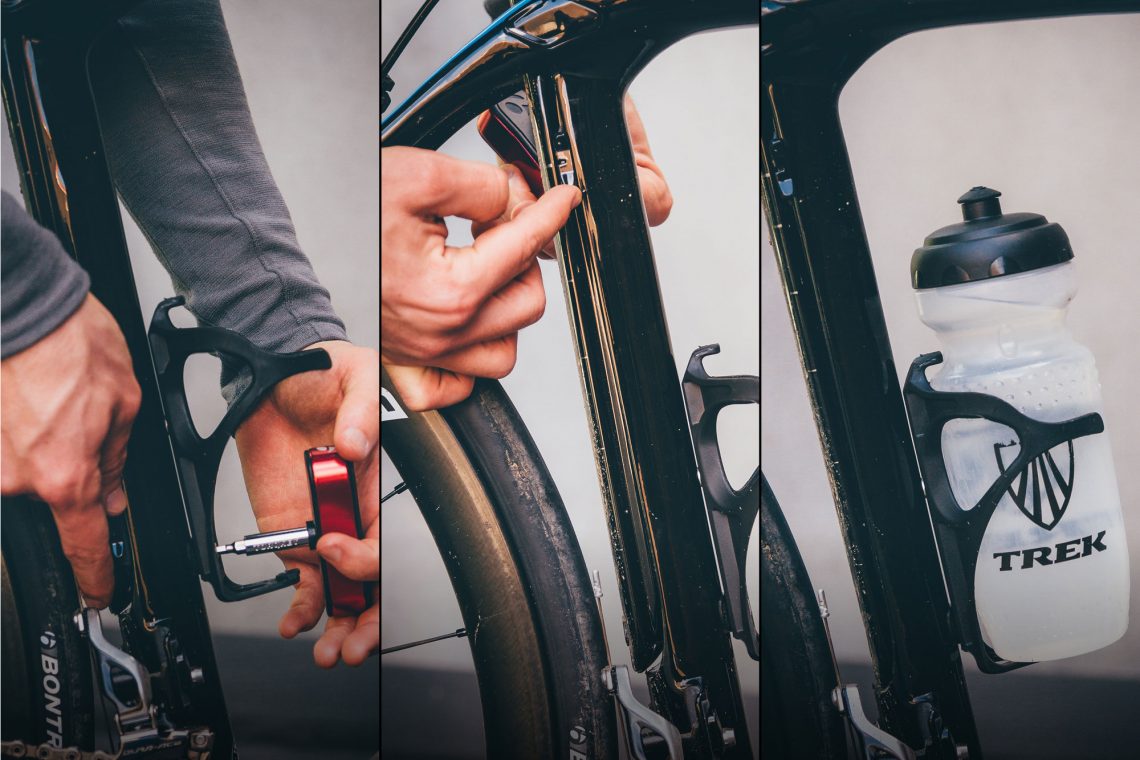

So is it a weakness to relish a touch of extra comfort? Or is it the only way to really unleash your strength? Comfort can aid victory, although achieving the ultimate performance will be far from comfortable. Either way, be it a racing situation or an evening ride to exploit the longer days, the Domane’s versatility is its strong point. Thanks to the wheel clearance and disc brake options, it performs as the ultimate all-rounder. Despite being one of the most technologically state-of-the-art bikes on the market, it looks wonderfully familiar, relying on the classic image of a road bike but bringing it firmly up to date with a meticulously designed frame and features. We’ll welcome a sufferfest as long as we’re on the Domane.
Top
- the ultimate bike, uniting comfort, efficiency and stability
- +adjustment with the IsoSpeed generation
- despite complex technology, serviceability is kept in check
- brilliant handling
Flop
- loose cables
Further information you can get at the Trek website.
Words: Robin Schmitt Photos: Noah Haxel
Did you enjoy this article? If so, we would be stoked if you decide to support us with a monthly contribution. By becoming a supporter of GRAN FONDO, you will help secure a sustainable future for high-quality cycling journalism. Click here to learn more.
Words & Photos: Robin Schmitt







